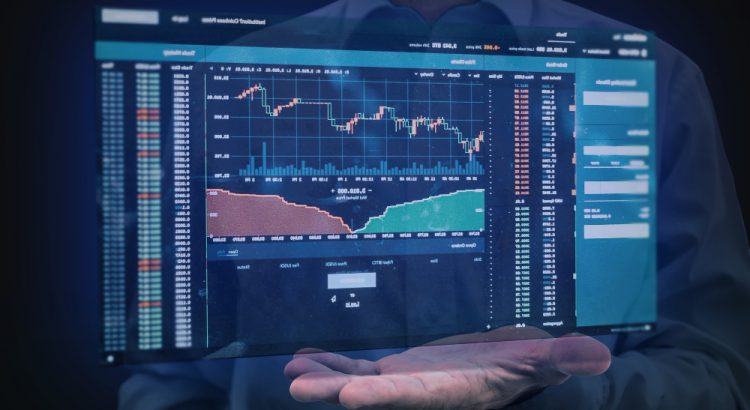The New York Stock Exchange (NYSE) is the largest and one of the most influential financial markets in the world. Located on Wall Street in New York City, the NYSE serves as the primary hub where investors buy and sell stocks, bonds, and other securities. Established as a centralized marketplace for trading equities, it has played a pivotal role in shaping the global economy. The NYSE provides a regulated environment that ensures fair trading, transparency, and liquidity, making it a crucial institution for businesses seeking capital and investors looking for opportunities. Whether you’re an experienced trader or a beginner in the stock market, understanding how the NYSE operates is essential for navigating the financial landscape effectively.
History of the New York Stock Exchange (NYSE)
The roots of the NYSE can be traced back to 1792, when 24 stockbrokers signed the Buttonwood Agreement under a buttonwood tree on Wall Street. This agreement established a structured and reliable system for securities trading, which later evolved into the New York Stock Exchange in 1817. Initially, the exchange operated from rented spaces, but as trading volumes grew, it moved to its current location at 11 Wall Street. Over the years, the NYSE has witnessed major economic events, including the stock market crashes of 1929 and 2008, regulatory changes, and technological advancements. Despite numerous challenges, it has remained a cornerstone of the financial system, continuously adapting to the ever-changing economic landscape.
How the NYSE Became the World’s Largest Stock Exchange
The NYSE’s dominance in the financial world is the result of centuries of growth, innovation, and strategic mergers. During the 19th and early 20th centuries, it became the go-to marketplace for companies seeking public investment, helping industries like steel, railroads, and manufacturing expand rapidly. By introducing listing standards and enforcing strict regulations, the NYSE established itself as a reliable platform for investors. Additionally, its merger with the Archipelago Exchange (Arca) in 2006 and the acquisition of Euronext in 2007 helped solidify its position as a global leader. With a total market capitalization exceeding $25 trillion, the NYSE continues to outshine other exchanges worldwide, attracting some of the largest and most prestigious companies.
The Structure of the NYSE: How It Works
The NYSE operates as a hybrid exchange, combining both human and electronic trading to ensure efficiency and fairness. The trading floor, staffed by designated market makers (DMMs) and brokers, facilitates real-time transactions, while electronic trading platforms enable high-speed order execution. The exchange follows an auction-based system, where buyers and sellers submit bids and offers, and the best possible price is determined through open competition. Additionally, the Securities and Exchange Commission (SEC) oversees the NYSE to maintain regulatory compliance and prevent market manipulation. This structured approach helps maintain investor confidence, ensuring smooth and transparent trading operations.
NYSE Trading Hours and Market Sessions
The NYSE operates on standard trading hours, running from 9:30 AM to 4:00 PM Eastern Time, Monday through Friday. In addition to the regular trading session, the exchange offers pre-market trading (4:00 AM to 9:30 AM) and after-hours trading (4:00 PM to 8:00 PM), allowing investors to respond to global events and economic news outside of standard hours. The market remains closed on major public holidays, such as Christmas Day and Independence Day. Understanding these trading sessions is crucial for investors looking to take advantage of market fluctuations and execute timely trades.
Types of Securities Traded on the NYSE
The NYSE facilitates the trading of a wide range of financial instruments, including common stocks, preferred stocks, bonds, exchange-traded funds (ETFs), and derivatives. Common stocks represent ownership in publicly traded companies, while preferred stocks offer fixed dividends with limited voting rights. Bonds, issued by corporations and governments, provide fixed income to investors. ETFs, which track indices or commodities, have gained popularity due to their diversification benefits. The exchange also supports the trading of options and futures, allowing traders to hedge risks or speculate on price movements. The diverse range of securities available on the NYSE ensures that investors of all types can find suitable investment opportunities.
NYSE vs. NASDAQ: Key Differences
While the NYSE and NASDAQ are both major stock exchanges in the U.S., they operate under different models. The NYSE follows an auction-based trading system with human market makers facilitating transactions, whereas NASDAQ is fully electronic, relying on automated trading algorithms. The NYSE primarily lists well-established, blue-chip companies, while NASDAQ is known for its technology-driven listings, including giants like Apple, Amazon, and Microsoft. Additionally, NYSE-listed companies must meet stringent listing requirements, whereas NASDAQ offers more flexible entry criteria. These differences make the NYSE a preferred choice for traditional companies, while NASDAQ attracts high-growth and tech-focused businesses.
How Companies Get Listed on the NYSE
For a company to be listed on the NYSE, it must meet strict financial and governance requirements. These include a minimum market capitalization of $100 million, a stock price of at least $4 per share, and a track record of profitability. Companies must also comply with corporate governance rules, including having an independent board of directors. The listing process involves filing an application, undergoing a review by NYSE officials, and completing an Initial Public Offering (IPO). Once approved, the company’s shares begin trading on the exchange, providing access to a vast pool of investors. The prestige and credibility associated with an NYSE listing often enhance a company’s reputation and market visibility.

Major Indices Associated with the NYSE
Several key stock market indices are associated with the NYSE, helping investors gauge overall market performance. The Dow Jones Industrial Average (DJIA), composed of 30 major companies, is one of the most widely followed indices. The S&P 500, which tracks 500 large-cap U.S. companies, provides a broader measure of market trends. The NYSE Composite Index includes all stocks listed on the exchange, offering insight into its overall health. Additionally, sector-specific indices, such as the NYSE Arca Gold Miners Index, track specialized industries. These indices serve as benchmarks for investors, fund managers, and analysts evaluating stock market movements.
Top Companies Listed on the NYSE
The NYSE is home to some of the world’s largest and most influential companies across various industries. Notable companies include Apple (AAPL), Coca-Cola (KO), Johnson & Johnson (JNJ), Berkshire Hathaway (BRK.A), JPMorgan Chase (JPM), and ExxonMobil (XOM). These firms have established themselves as market leaders, contributing significantly to the exchange’s total market capitalization. Additionally, global corporations like Alibaba (BABA) and Toyota (TM) have chosen the NYSE for their U.S. listings due to its credibility and investor reach. The presence of these blue-chip companies reinforces the NYSE’s status as a premier stock exchange, attracting investors from around the world.
Conclusion
The New York Stock Exchange remains a pillar of the global financial system, providing businesses with capital-raising opportunities and investors with access to a diverse range of securities. Its rich history, structured trading mechanisms, and stringent listing requirements contribute to its reputation as the world’s leading stock exchange. By understanding how the NYSE operates, traders and investors can make informed decisions, capitalize on market trends, and navigate the ever-evolving financial landscape with confidence.






 Forex Currency Stock API is able to provide real-time exchange rate data for global currencies. This API comes with multiple endpoints, each serving a different usage state. Endpoint functionality includes getting the latest exchange rate data for all currencies or a specific set of currencies, converting currency from one currency to another, restoring time series data for a currency or multiple currencies, and querying the daily volatility data API.
Forex Currency Stock API is able to provide real-time exchange rate data for global currencies. This API comes with multiple endpoints, each serving a different usage state. Endpoint functionality includes getting the latest exchange rate data for all currencies or a specific set of currencies, converting currency from one currency to another, restoring time series data for a currency or multiple currencies, and querying the daily volatility data API.